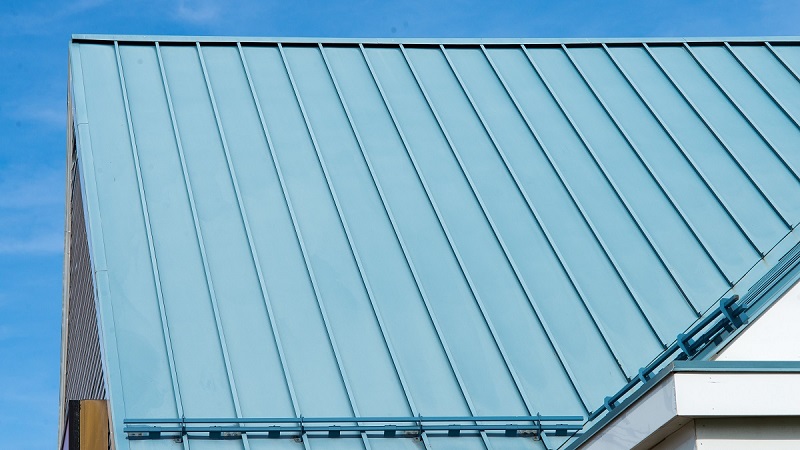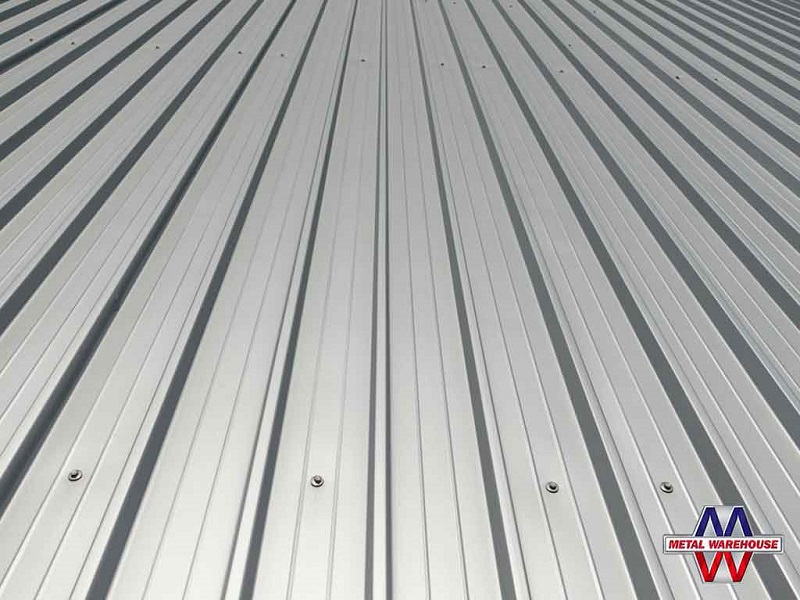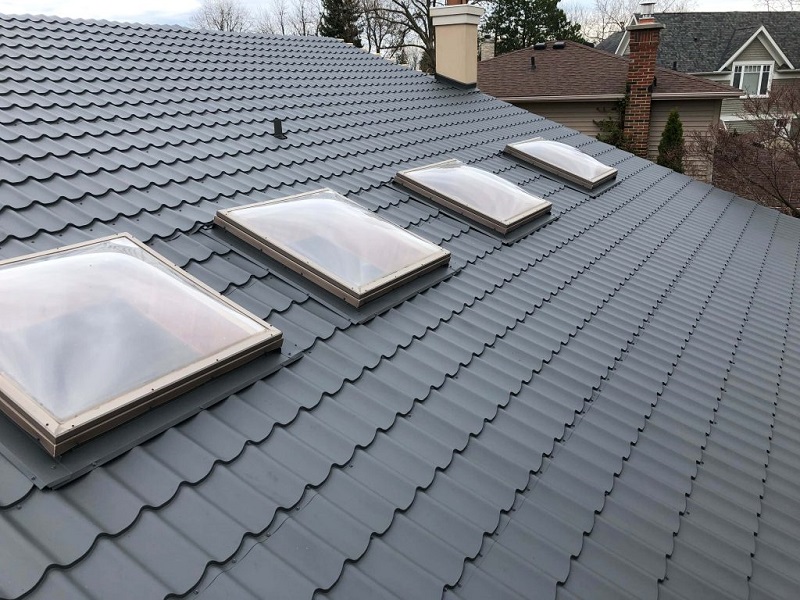Have you ever drove across the city noticing the houses adorned with bright and sheen metal roof? Years back, metal roofing was only visible in architect-intensive luxury homes and commercial buildings. But over the years, it has lost its position as a novelty and is increasingly seen in conventional homes. This is owing to the enhanced manufacturing processes couple with a production boom.
According to the industry data of 2017, metal roofing increased its market share at a rate of 3 percent every year. Moreover, 15 percent of roofing installations constituted metal roofs. On the flip side, asphalt shingles, which was the most common roofing solution saw a steady decline in market share.
As you could see, metal roofing has successfully entered the mainstream and has become a common choice for almost all homes. Today, shingle-designed metal roofing is also available. But why are they becoming increasingly popular? Let’s find out.

Why should you invest in a Metal Roof?
Perhaps, one of the greatest benefits of a metal roof is that it can be installed over the pre-existing roof. If your local building regulations allow, you can get them without removing any shingle. But it may trap water vapor in between your existing roof and the new metal roof. This may give rise to moisture trapping and lead to mold or rot.
Installing a vented metal roof can alleviate this issue to a great extent. Some contractors also recommend installing furring strips underneath the metal roof for raising it a bit so that air pockets form between the two layers.
Metal Roof is not that noisy
Many of us are still under a misconception that hail and rain produce a lot of noise in metal roofing. But the reality is that it doesn’t create more noise than asphalt roofs. Metal roofs are generally installed over a bed of solid layers. Moreover, with the proper installation, insulation, and attic form an additional barrier to sounds. From the angle of people living inside, there with hardly be any increase in the sound levels with metal roof installation.
The Metal Roof won’t attract lightning
Another common rumor is that metal roofing will attract lightning which can be dangerous for the inhabitants. But it’s surprising that no research or statistical data supports it. As per the bulletin released by “Metal Construction Association”, the working of metal roofing doesn’t support the risk of attracting lightning. Even if it gets stuck by thunder or lighting, it will be less prone to burning compared to traditional roofing solutions like shingles or wooden platforms.
Further, the bulletin confirms, metal roofing is not only a viable electrical conductor but also a non-combustible element. That is why the risks pertaining to its use during lightning are close to null.
The reason why metal roofs fail to attract lightning is quite straightforward. Lightning looks forward to reaching the ground for which poles, trees, and such other grounded structures easily attract lightning. On the contrary, metal roofs are isolated structures without any direct link to the ground. Thus, there’s no scientific backup supporting that a metal roof will set your house on fire during lightning.
Metal Roof is more energy and cost-effective
With the proper care and maintenance, metal roofing can last up to 50 years or even more. As per the statistics presented by State Farm Insurance, metal roofs have an average life range between 40 and 70 years. Thus, it is highly unlikely that you will have to install more than a single metal roof throughout your course of life in the home.
On the contrary, you may have to replace your asphalt roof more than twice in the same time span. Even if you think that a metal roof would be a costlier alternative to asphalt shingles, it will last more and help you save money in the long run. Also, many insurance providers offer lowered rates for metal roofs, especially in areas prone to wildfires and hail which further reduces cost.
In areas where energy requirements are higher for cooling than heating, having a metal roof installed with a granular sheath helps in boosting the reflective capacity of the terrace. This is supported by numerous studies showing that metal roofing reflects solar heat, thereby reducing the cooling costs by up to 25 percent.

Metal Roof works well with low-sloped canopies
We often think that a metal roof is only suitable for roofs having a steep slope. But some specially crafted standing-seam roofs can be well-fitted on gentle slopes as well. This kind of roofing is also available in large sheets with hemmed areas. These zones are a bit raised and sealed securely for resisting water. This suggests that even though slight sloping is required for water to run off, metal roofing is suitable for most buildings.
What are the different options for a Metal Roof?
With such an astounding variety of metal roofs, it’s hard to decide which could be the best option for your home. From the traditional copper to novel stainless steel- metal roofing has come a long way. Let’s explore each of these options and their pros and cons.
Copper Roof
Revered as one of the earliest options among metal roofing, copper has been in use as a terrace for centuries. It is highly durable and can last more than 200 years when properly maintained. Since they are completely recyclable, it is also a viable eco-friendly option.
Pros:
- Copper roofing doesn’t take much time to install since it is very soft and malleable.
- With the right metal roofing insulation and substrates, a copper roof can also minimize noise to a great extent.
- Even though it is softer than others, it performs better in hailstorms.
- Copper is highly energy efficient. Installing it onto your roofs can bring down energy consumption bills.
Cons:
- it’s more expensive than the other regular options. Also, the installation requirements are higher depending on the needs of your home.
- It contracts and expands depending on the fluctuations of temperature which may compel the fasteners to be loose.
Zinc Roof
Zinc is a brilliant metal that can use its own patina for enduring wear and tear. Moreover, with this roof, you won’t have to think of replacing it in 100 years! The natural traits of this metal make it a perfect choice for both commercial and residential roofing. It can be effortlessly manipulated into any form which makes the installation process easy and energy-efficient.
Pros:
- Zinc has a pretty lower melting point. It implies that metal processing takes up about a quarter of the energy needed for copper or steel.
- Zinc roof gives way to a patina that serves as a protective layer from wear and tear.
- Once you have installed the roof, there’s not much that you need to do to maintain it.
- It’s totally recyclable and available everywhere.
Cons:
- Zinc falls in the same price bracket as copper. Moreover, you need an expert’s knowledge and experience in installing it.
- Like most other bare metals, zinc also develops a patina of bluish-grey appearance. When left unpainted, it may form a chalk-like residue that taints the aesthetic appeal of the roof.
Steel Roof
Used in almost every part of a building, steel is also a plausible option when it comes to roofing. Though it was primary used in commercial sites, nowadays, it is also incorporated in homes. Moreover, steel is the most recycled element which makes it an eco-friendly option again.
Pros:
- Compared to other options, steel is the cheapest among the metal roofs. While it is always high in demand, it is priced lower than zinc, copper, and aluminum.
- They are easily available and you can choose among galvalume steel, galvanized steel, and weathering steel.
- In the last few decades, the technology involved in manufacturing steel roofing has advanced a lot. The paint solution used in this roofing matches the patina of zinc and copper.
- It carries longer warranties which imply that you can use them for remodeling, restoration, ad even new construction projects.
- Since it’s a green option, you can access it easily and also recycle it.
- Lastly, being one of the hardest alloys, you can use it in any weather conditions, including high winds and hailstorms.
Cons:
- It is very difficult to spot any disadvantage of steel roofing. It can thus be called a clear winner among the various roofing solutions.
The Bottom Line
Even though metal roofing offers a lot of advantages, there are certain areas that you should be watchful for. In the end, the ultimate choice boils down to your budget and personal preferences. Other factors include the location of your home, the experience of the roofing contractor, and the environmental conditions that you will put it through. With all these things in place, you can rest assured that the metal roof will continue to serve you for decades.


